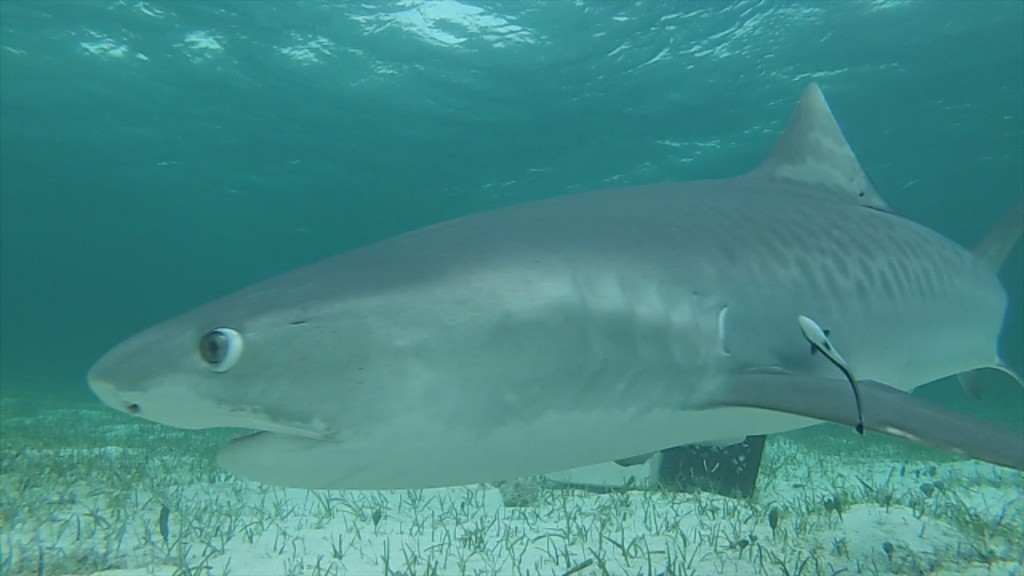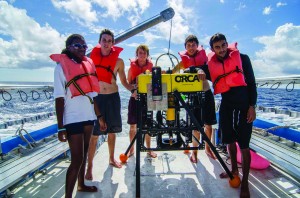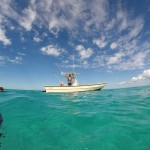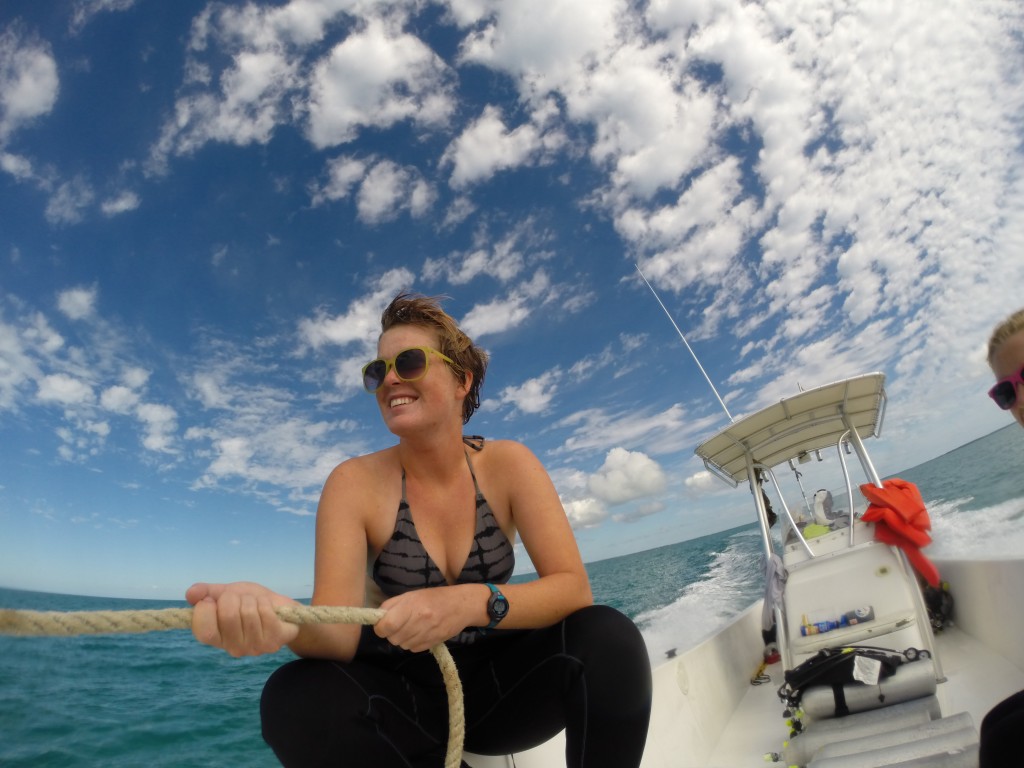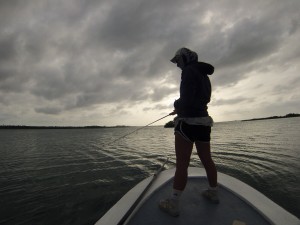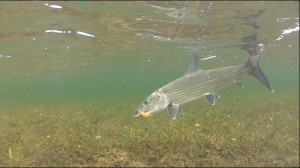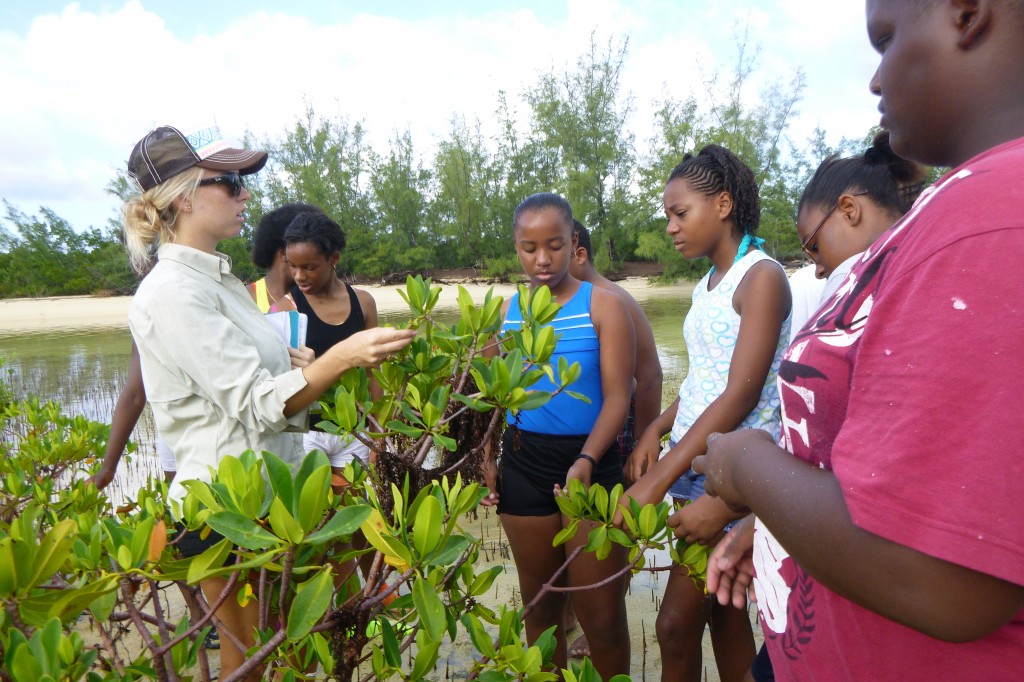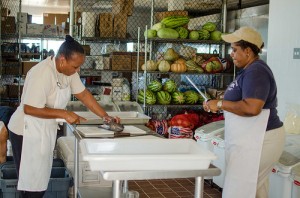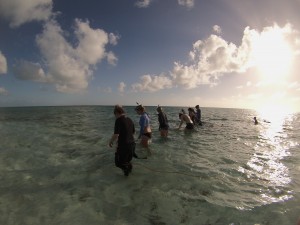
This weekend saw visiting Exeter students and professors heading to the Schooner Cays with the CEI Queen Conch team. A 30-minute ride and short swim allowed us to conduct shallow water surveys around the relatively remote and seldom-visited islands. Since they were last surveyed in 1993, little data has been collected on population densities around the island. Recent questions regarding changing larval supplies and reduced reproduction as a result of fishing pressures meant that collecting new data was particularly important.
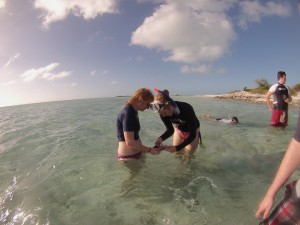
The group split into two teams of undergrads to complete surveys in two different areas of the shore. Calipers, measuring tapes, and snorkel gear were distributed and lines of observers began advancing through the surf. Forty minutes later, one group had found only 2 live juvenile conch. Just down the beach, the second group found almost 350.
